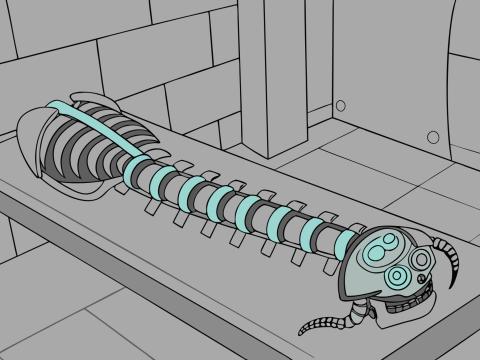Transcending the Valley of Death
The “Valley of Death.” It’s the grim place most any startup company selling into the Department of Defense (DoD) finds itself: the awkward place between research and development and program funding. The valley is vast and daunting, and its bed is littered with the remains of outstanding technologies that could help warfighters right now.
Unfortunately, the success rate of companies that can cross the valley is dismally low. Many startups targeting the DoD fail to bridge the gap between conducting a pilot project and securing acquisition for their product for a program of record with a real budget. The challenges are especially acute for startups and emerging defense companies. The typical startup company operates on shoestring financing, and the government procurement process frequently lasts longer than most companies have a runway to keep their doors open. The few that survive join a tiny club and are said to have successfully transitioned a technology to production and fielding.
There are several reasons why this dynamic persists. In large part, it links back to a misalignment between government sourcing policies and procedures and tech innovators’ expectations for working with government customers. Additionally, many across the startup ecosystem typically lack the cultural and historical expertise of working in government procurement environments, which are vastly different from commercial markets. But DoD leaders will also benefit from better understanding what they can do to streamline engagement, policies and execution to address the technology transition problem.
Creating a bridge over the Valley of Death is more critical to sustaining battlefield advantage now than ever before. With unprecedented and ruthless adversarial forces at work, both the startup ecosystem and the DoD must continually pursue ways to move innovation into the department more quickly. The DoD cannot win future conflicts or wars doing business as usual. The consolidation of the military industrial base following the Cold War has left the nation with too little wherewithal and redundancy in supply capacity. We have become brittle.
The digital factor in modern combat has provably changed the course of the conflict in Ukraine. For example, Russia leveraged distributed denial-of-service attacks shortly before its physical invasion. In other instances, state-of-the-art AI-enabled satellite imagery analysis has kept the Ukrainian military informed about Russian troop movements, and commercial satellite communications enable connectivity to allow citizens and military forces to remain better informed than in any previous conflict.
Adversaries are adopting technologies to exploit any advantage on or off the battlefield. To maintain a strategic advantage, the DoD must accelerate innovation and adopt technologies to arm itself with advanced capabilities. Deterring a technologically savvy adversary like China will require the DoD to exploit a wide array of commercial technologies across the United States and in concert with allies. If deterrence doesn’t work, the side that can introduce emerging technologies and updated software faster will likely gain a competitive tactical and operational advantage. Ensuring the United States is that side involves adjustments by all concerned.
The Pentagon has long recognized the Valley of Death and launched many efforts to overcome it. For instance, the Small Business Innovation Research (SBIR) program was created five decades ago and continues to be a reliable mechanism for small businesses to develop access to the defense market and prototype solutions with warfighters.
The more recently created Defense Innovation Unit focuses exclusively on fielding and scaling specific leading-edge commercial technologies for dual use across the DoD at commercial speeds. To date, the Defense Innovation Unit has successfully transitioned 26 commercial prototypes to other Defense Department agencies for large-volume procurement.
Each DoD component has its own Rapid Capabilities Office to accelerate methods for developing, acquiring and fielding critical combat capabilities. In addition, the Rapid Defense Experimentation Reserve program is a collaborative effort among military branches, industry, combatant commands and joint partners to foster innovations to benefit multiple warfighting forces.
Last December, the Office of Strategic Capital was created to connect the DoD with companies developing critical national security technologies and the capital to fund them, especially in areas where private capital has underinvested.
These are just some of the available accelerator programs, but all are diverse and disjointed. They are often used as workarounds by well-intentioned DoD leaders trying to quickly solve real problems warfighters experience. It is encouraging that many in government want to accelerate innovation by overcoming entrenched sourcing hurdles. But it also is easy to see how navigating these mechanisms can be confusing for a young business.
Many in DoD leadership believe commercial innovators don’t have the understanding, patience or tolerance needed to transact with the department. Consequently, they expect fledgling companies to pull out of the DoD pipeline too quickly. But considering the continually growing number of innovation programs, the department clearly wants to keep young companies engaged and build the defense base.
Many in the tech innovation community entering this environment for the first time don’t understand the DoD as a customer and subsequently don’t properly prepare for the journey. DoD leaders have a commercial learning curve of their own.
One of the most important hurdles to overcome is the element of time. Startups and their backers, who are used to working at lightning speed, must accept that the federal government moves at a different pace. If a company has an innovation that truly will be valuable to the DoD, patiently laying the groundwork can yield a long-term payoff. However, the journey most likely will not be a straight line.
For its part, DoD leadership must understand that technology, particularly software, is not developed on four-year or even two-year budget cycles. It is moving at a speed of relevancy in which massive improvements and capabilities may be seen in months or even weeks. Software requirements can and usually do change dramatically, and in short order. Venture capitalists who foster the front lines of innovation development repeatedly state that they have billions of dollars to invest in emerging technology, but they need a clear demand signal to commit capital that will ultimately benefit the DoD. Deputy Secretary of Defense Kathleen Hicks and others have even cited the acquisition process as one of the biggest vulnerabilities to DoD readiness. This situation must change.
Access to talent is another priority issue. Highly capable and tech-savvy individuals are migrating to the more agile private sector. With China adopting a culture of aggressive cyber acquisition, the DoD has additional incentive to streamline access to the best and brightest talent, wherever it is, as quickly as possible. Everyone on the leading edge of innovation is needed to work with the DoD and support the cause of national defense.
Achieving these goals involves three separate but equally important components—a trifecta for success—beyond developing the technology itself. The trifecta includes requirements, acquisition and budget processes. If not correctly planned, any one of them can send even the most promising tech innovator into the Valley of Death. These components should be considered concurrently, not sequentially, because each involves different processes with different people in charge.
Startups often misunderstand the government prerequisite for a formal requirements document before any purchase. A company in a pilot program should clearly and proactively explain to a government prospect both the investment it is making and the reality of its operational window. That should include a frank acknowledgment of when the company must secure some revenue or risk no longer being a viable business.
That reality may be unexpected or eye-opening to a DoD leader for whom running out of money or shutting the doors is never a consideration. If they don’t see a clear requirement associated with a program in the near term, it may deter them from supporting further development of the specific innovation. But it could also have some positive impact on the DoD’s ability to move toward adoption. Those in government must recognize the innovator’s constraint, and not—even unintentionally—create an expectation of a purchase at the end of a pilot if no funding is available. But if a DoD customer does intend to buy, they should proceed in a way that keeps the company motivated and viable.


Once a validated requirement is in place, the complex government acquisition process begins. Understandably, newcomers will default to commercial sales mentality and techniques, so they must learn how to sell to the DoD. They must become proficient in the authorities, policies, contract vehicles and roles involved in the buying process. This world is daunting, complex and inefficient to the uninitiated.
With no consistent, repeatable process to teach them, DoD leaders genuinely interested in a new technology can try to help and even mentor the promising talent creating it. A tech innovator who brings breakthrough technology and demonstrates good faith and interest in making a difference will greatly benefit from an inside champion who can legally guide and encourage them through the process, such as through an SBIR contract or a cooperative research and development agreement.
Startups also need to understand some practical constraints the DoD must manage, such as avoiding being in a sole-source purchasing situation, the need to maintain certain types of data and intellectual property rights and the unique legal constraints to their contract agreements. Proven commercial use cases will help support DoD decision-making about sourcing risk. DoD leaders also need to keep the bidding and selection process competitive and fair to comply with federal acquisition regulations and ensure their duty to the warfighters and taxpayers.
Hiring the right experience into the capture team is the key to startup success in the acquisition process. Beware the differences between DoD capture and commercial sales and treat each with the unique care they demand.
Finally, the third component is budgeting. DoD insiders understand the “colors of money” available for technology acquisition—research, development, test and evaluation; procurement; and operation and maintenance. But tech startups—and even venture capitalists—most likely do not. Because of how government funding cycles work, startups entering the DoD system at the wrong time may significantly increase the period to any payoff, preventing them from meeting fiscal return on investment obligations. Innovators must learn to navigate the system or risk struggling to ensure business continuity.
With the government fiscal year 2024 budget planning already wrapping up, new requirements are being projected for the fiscal year 2025. Funding anything discretionary in the interim is tricky, so timing is critical, even with the breadth of government programs supporting pilots and prototypes. For instance, the Office of Strategic Capital can fund programs only twice per year. While SBIR can be ideal for getting in the door, it does not align with the DoD’s funding schedule. The Defense Innovation Unit, as another specific example, rarely, if ever, has significant funding for anything beyond initial seed investments and prototype demonstrations. What many innovation programs like SBIR and the Defense Innovation Unit solve is access to customers, who then must establish formal requirements and integrate an innovation into the next fiscal cycle.
Despite considerable public discourse about the need for faster, more agile government innovation, the current reality is that rapid acquisition at scale and funding policy simply do not line up. That must be fixed or the DoD will find itself at a strategic disadvantage against threats from near-peer adversaries that innovate faster.
There is reason to be hopeful about the future of technology innovation in sustaining U.S. defensive dominance. Tremendous technological developments are happening in real time, and the brightest minds in the nation are making them possible. These innovations will protect warfighters and borders while reinforcing America’s commitment to upholding the rules-based international order and preserving peace. The collective responsibility is to help as many of those critical innovators as possible bridge the Valley of Death and bring much-needed innovation to bear on the nation’s behalf.
Michael Weigand is the co-founder and chief growth officer at Shift5, which unlocks fleet and weapon system onboard data to help achieve optimal operational readiness, lethality and survivability.
The opinions expressed in this article are not to be construed as official or reflecting the views of AFCEA International.





Comments